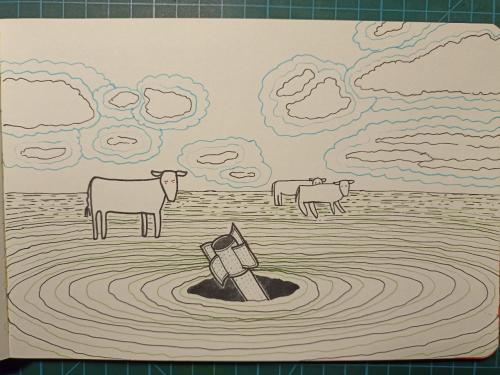Online Seminar | Dream Sequences in War Films

We would like to invite you to the online seminar "Dream sequences in war films". The event is part of the public program on documenting the experience of violence and warfare "Source as a choice," organized by our partner the Center for Urban History of East Central Europe in Lviv, in cooperation with EHRI.
During the seminar, Dr. Billy Glew will discuss dream sequences and how they allow filmmakers to convey a rich variety of emotions and narrative information to the audience which can otherwise be difficult to express.
Film dream sequences can divulge the internal, repressed emotions of protagonists (The Passion of Anna, Ingmar Bergman, 1969) and private memories or thoughts which would not be spoken when awake (The Discreet Charm of the Bourgeoisie, Luis Bunuel, 1972). Dreams can reveal repressed or forgotten information, allowing both the film's protagonist and the audience to piece together vital clues to solve a mystery (Before I Go to Sleep, Rowan Joffe, 2014, and Spellbound, Alfred Hitchcock, 1945).
Premonitory dreams can show chains of events which the protagonist must seek to prevent ranging from personal danger (Blue Steel, Kathryn Bigelow, 1989) to nuclear holocaust (Terminator 2: Judgment Day, James Cameron, 1991, and Dreamscape, Joseph Ruben, 1984). Dreams are used to reveal changes of internal physical states the protagonist is consciously unaware of (An American Werewolf in London, John Landis, 1981, and The Fly, David Cronenberg, 1985) and can express anxiety (Nostalgia, Andrei Tarkovsky, 1983), guilt (Dreams, Akira Kurosawa, 1990), post-traumatic stress disorder (Interstellar, Christopher Nolan, 2014), fantasies (The Woman on the Beach, Jean Renoir, 1947) and schizophrenia (One Hour Photo, Mark Romanek, 2002).
This seminar specifically focuses on dream sequences from films depicting war and aims to identify if there are specific themes and filmmaking techniques used in war dream sequences. We will analyse the emotions, thoughts, and motives of the dreaming protagonists using the dream theories of Freud, Jung, Hobson, and Revonsuo, to explore how dream sequences aid storytelling in films depicting war.
For more info and registration, visit the website of the Center for Urban History.
Image: Ihor Kolesnyk, www.lvivcenter.org/en/discussions/dream-sequences-in-war-films